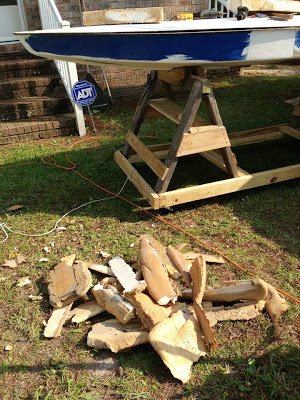sunfishsailer2374
New Member
I just bought a SLI sunfish, and I saw that there is a spider's nest in it. This and the fact that I want to make sure that the mast step is in good shape, all of the backing plates are not rotted, and the fact that I want a backing plate to hold the hiking strap up in the back of the storage compartment and there are no problems with the foam are the reason I need to take the deck off of this sunfish.
Please let me know the best way to do this, I know this has been done before but cannot find anything besides this post "splitting-the-deck-on-a-newer-hull" (the websiste will not allow me to send a link sorry!)
Please let me know the best way to do this, I know this has been done before but cannot find anything besides this post "splitting-the-deck-on-a-newer-hull" (the websiste will not allow me to send a link sorry!)


